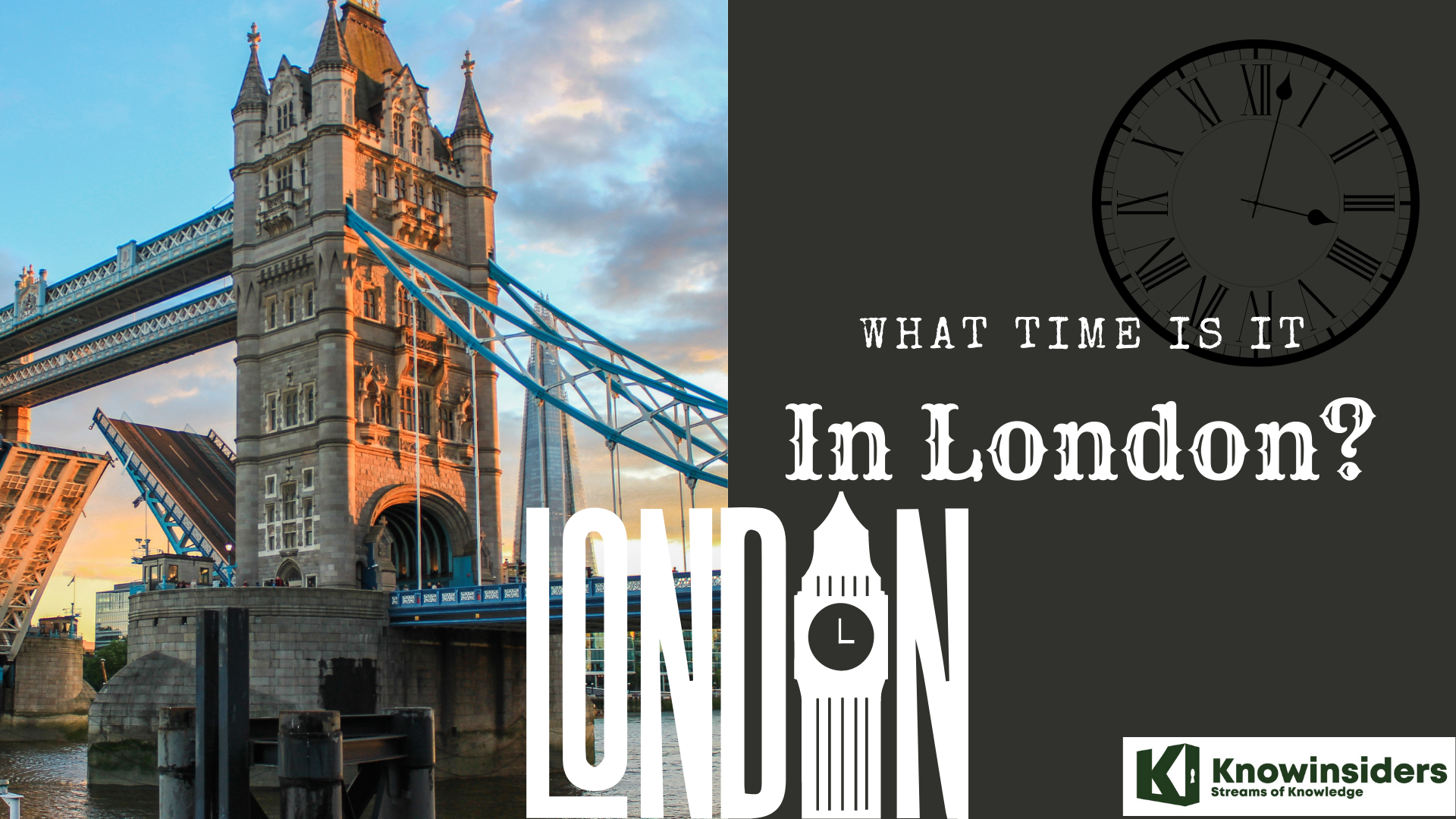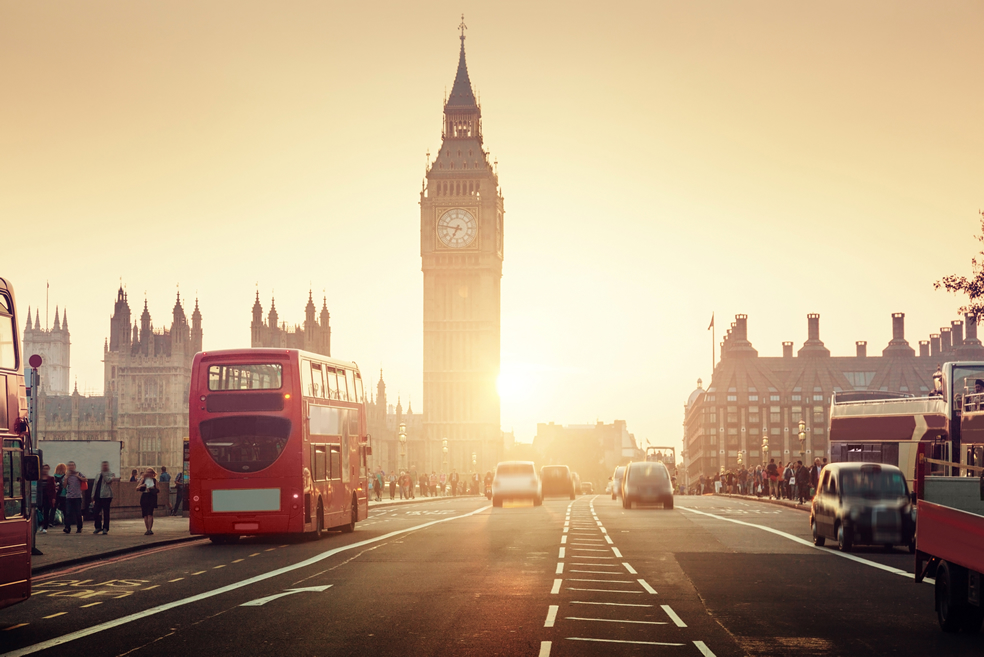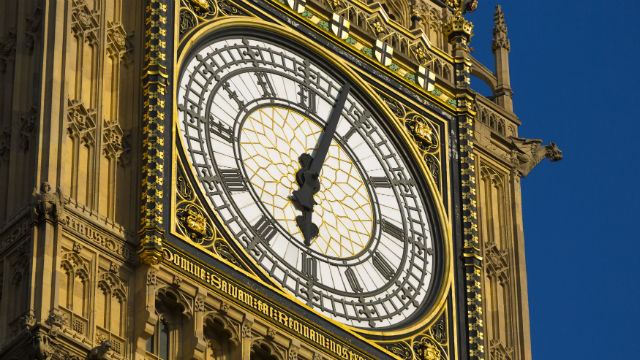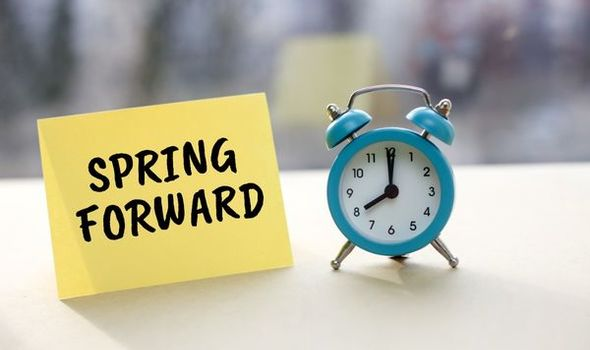What Time Is It In London: Time Zone, Time Difference and Clock
 |
| What Time Is It In London: Time Zone, Time Difference and Clock |
London, the capital of the United Kingdom (UK), follows European Daylight Saving Time rules (or clock change dates). London is also the capital of England, one of the constituent countries of the UK.
Time Zone Currently Being Used in London, United Kingdom
The United Kingdom uses Greenwich Mean Time or Western European Time (UTC) and British Summer Time or Western European Summer Time (UTC+01:00).
| Offset | Time Zone Abbreviation & Name | Example City | |
|---|---|---|---|
| UTC +0 | GMT | Greenwich Mean Time | London |
How Many Time Zones Are There in the UK?
The United Kingdom has 1 standard time zone. The overseas territories and crown dependencies of the UK bring the total to 9 time zones.
Time Zones Being Used in Dependencies of United Kingdom
| Offset | Time Zone Abbreviation & Name | Dependency | Type | |
|---|---|---|---|---|
| UTC -8 | PST | Pitcairn Standard Time | Pitcairn Islands | Overseas territory |
| UTC -5 | EST | Eastern Standard Time | Cayman Islands | Overseas territory |
| EST | Eastern Standard Time | Turks and Caicos Islands | Overseas territory | |
| UTC -4 | AST | Atlantic Standard Time | Anguilla | Overseas territory |
| AST | Atlantic Standard Time | Bermuda | Overseas territory | |
| AST | Atlantic Standard Time | British Virgin Islands | Overseas territory | |
| AST | Atlantic Standard Time | Montserrat | Overseas territory | |
| UTC -3 | FKST | Falkland Islands Summer Time | Falkland Islands | Overseas territory |
| UTC -2 | GST | South Georgia Time | South Georgia/Sandwich Is. | Overseas territory |
| UTC +0 | GMT | Greenwich Mean Time | Guernsey | Crown dependency |
| GMT | Greenwich Mean Time | Isle of Man | Crown dependency | |
| GMT | Greenwich Mean Time | Jersey | Crown dependency | |
| GMT | Greenwich Mean Time | Saint Helena | Overseas territory | |
| UTC +1 | CET | Central European Time | Gibraltar | Overseas territory |
| UTC +6 | IOT | Indian Chagos Time | British Indian Ocean Territory | Overseas territory |
Time Zone Not Currently Being Observed in United Kingdom
| Offset | Time Zone Abbreviation & Name | Commences | |
|---|---|---|---|
| UTC +1 | BST | British Summer Time | 27 Mar 2022 |
The above time zone is used during other parts of the year. It will become active again after the next clock change as Daylight Saving Time begins or ends.
GMT and Greenwich - a brief history of time and time zones
 |
| Photo: Silicon Dales |
Until the advent of the railways, the United Kingdom used Local Mean Time. Greenwich Mean Time was adopted first by the Great Western Railway in 1840 and a few others followed suit in the following years. In 1847 it was adopted by the Railway Clearing House, and by almost all railway companies by the following year. It was from this initiative that the term "railway time" was derived.
It was gradually adopted for other purposes, but a legal case in 1858 held "local mean time" to be the official time. On 14 May 1880, a letter signed by 'Clerk to Justices' appeared in 'The Times', stating that 'Greenwich time is now kept almost throughout England, but it appears that Greenwich time is not legal time. This was changed later in 1880, when Greenwich Mean Time was legally adopted throughout the island of Great Britain under the Statutes (Definition of Time) Act 1880 (43 & 44 Vict.). GMT was adopted on the Isle of Man in 1883, Jersey in 1898 and Guernsey in 1913. Ireland adopted GMT in 1916, supplanting Dublin Mean Time.
Daylight saving time was introduced by the Summer Time Act 1916 (6 & 7 Geo. V), which was implemented in 1916 as GMT plus one hour and Dublin Mean Time plus one hour. The length of DST could be extended by Order in Council, and was extended for the duration of World War I. For 1916, DST extended from 21 May to 1 October, with transitions at 02:00 standard time. On 1 October 1916, Greenwich Mean Time was introduced to Ireland.
At the beginning of the 20th century, Sandringham Time (UTC+00:30) was used by the royal household. This practice was halted by King Edward VIII, in an effort to reduce confusions over time.
The United Kingdom experimentally adopted Central European Time by maintaining Summer Time throughout the year from 1968 to 1971. In a House of Lords debate, Richard Butler, 17th Viscount Mountgarret said that the change was welcomed at the time, but the experiment was eventually halted after a debate in 1971, in which the outcome might have been influenced by a major accident on the morning of the debate. Proposals to adopt CET have been raised by various politicians over the years, including a proposal in 2011 to conduct an analysis of the costs and benefits.
The dates of British Summer Time are the subject of the Summer Time Act 1972. From 1972 to 1980, the day following the 3rd Saturday in March was the start of British Summer Time (unless that day was Easter Sunday, in which case BST began a week earlier), with the day following the 4th Sunday in October being the end of British Summer Time. From 1981 to 2001, the dates were set in line with various European Directives. Since 2002 the Act has specified the last Sunday in March as the start of British Summer Time with the last Sunday in October being end of British Summer Time.
Since 1998 the start and end date are the same in both the United Kingdom and the European Union.
A London Time Landmark
 |
| Photo: Visit London |
Until 2017, visitors to central London and Londoners alike were able to check time in London London and the whole of the UK just by looking up near the Parliament. A majestic tower, Elizabeth Tower, houses what is likely the most famous clock in the world, affectionately known as Big Ben.
Its chimes have always been as iconic as its face. On 21 August 2017, at midday, Big Ben chimes sounded once more before the start of major maintenance work. These chimes were heard again on Remembrance Day (11 November) and they ushered in the New Year 2018. Big Ben is expected to remain silent till 2021.
London and New York time difference
New York, New York is 5 hours behind London, United Kingdom.
If you live in London, United Kingdom and you want to call a friend in New York, NY, you can try calling them between 12:00 PM and 4:00 AM your time. This will be between 7AM - 11PM their time, since New York, New York is 5 hours behind London, United Kingdom.
If you're available any time, but you want to reach someone in New York, NY at work, you may want to try between 2:00 PM and 10:00 PM your time. This is the best time to reach them from 9AM - 5PM during normal working hours.
UTC+0 hours UTC-5 hours
London, United Kingdom New York, NY
2:00 PM 9:00 AM
2:30 PM 9:30 AM
3:00 PM 10:00 AM
3:30 PM 10:30 AM
4:00 PM 11:00 AM
4:30 PM 11:30 AM
5:00 PM 12:00 PM
What is British Summer Time?
 |
| Photo: Daily Express |
During British Summer Time (BST), civil time in the United Kingdom is advanced one hour forward of Greenwich Mean Time (GMT), in effect changing the time zone from UTC+00:00 to UTC+01:00, so that mornings have one hour less daylight, and evenings one hour more.
BST begins at 01:00 GMT on the last Sunday of March and ends at 01:00 GMT (02:00 BST) on the last Sunday of October. The starting and finishing times of daylight saving were aligned across the European Union on 22 October 1995, and the UK retained this alignment after it left the EU; both BST and Central European Summer Time begin and end on the same Sundays at 02:00 Central European Time, 01:00 GMT. Between 1972 and 1995, the BST period was defined as "beginning at two o'clock, Greenwich mean time, in the morning of the day after the third Saturday in March or, if that day is Easter Day, the day after the second Saturday in March, and ending at two o'clock, Greenwich mean time, in the morning of the day after the fourth Saturday in October."
| British Summer Time, also known as Daylight Saving Time, was the brainchild of a builder from Kent called William Willett. The story goes that one day on his way back from riding his horse in Petts Wood near his home in the early 1900s, he noticed many of the blinds and curtains in the neighbouring houses were still drawn, even though it was light. This led him to consider the idea of adapting the time to better fit daylight hours. Back then the clocks were set all year round to Greenwich Mean Time (GMT), meaning it was light by 3am and dark around 9pm in the summer. Although he was not the first person to advocate this, he was perhaps the most driven, using his own resources to finance a pamphlet outlining his idea for adapting to daylight hours during the summer. His original proposal was for the clocks to be put forward by 80 minutes in total, in four steps of 20 minutes each Sunday at 2am during April and turned back in the same way in September. He argued that this would mean longer daylight hours for recreation, improving health and also saving the country money in lighting costs. Through this leaflet “The Waste of Daylight” and his vigorous campaigning, in 1908 Willett got the support of the MP Robert Pearce who championed the idea, albeit unsuccessfully, in the House of Commons. The idea resurfaced during World War One when the need to conserve coal made the suggestion of daylight saving more pertinent. Germany had already introduced a similar scheme when the Summer Time Act was finally passed in the UK on 17th May 1916. The clocks went forward one hour on the following Sunday, 21st May. The time changes were widely advertised in the press. To return to GMT on 1st October 1916, people were advised to put their clocks forward by 11 hours rather than turning the hands back an hour, as in those days this would break the mechanism. |
British Summer Time: when do the clocks change in 2022?
The clocks change twice a year in the UK. They are moved forward by one hour in March, for what is known as British Summer Time, and are turned back by one hour in October.
If you find yourself confused about which way the clocks are moving, remember to use the helpful phrase "spring forward, fall back".
The changing of the clocks was suggested by William Willett in 1907, who wished to stop the waste of early morning daylight and introduce brighter evenings during the summer months.
British Summer Time was first introduced in 1916 as an Act of Parliament and over the last century the clocks have continued to move forward each year in March, with only a few exceptions, such as during the Second World War.
When do the clocks go forward?
The clocks go forward on the last Sunday of March, jumping from 1am to 2am. When the clocks move forward by an hour, it is known as British Summer Time or Daylight Saving Time.
When do the clocks go back?
The clocks go back on the last Sunday of October, changing from 2am to 1am.
When do the clocks change in 2022?
The clocks will then next go forward by one hour at 1am on 27 March 2022.
The clocks will next turn back by one hour at 2am on 30 October 2022.
British Summer Time Dates 2007-2022
Daylight saving time begin and end dates, Sunday 01:00 GMT (1.00am Greenwich Mean Time):
| Year | DST starts at 1 a.m. | DST ends 2 a.m. |
|---|---|---|
| 2022 | March 26 | October 29 |
| 2021 | March 28 | October 31 |
| 2020 | March 29 | October 25 |
| 2019 | March 31 | October 27 |
| 2018 | March 25 | October 28 |
| 2017 | March 26 | October 29 |
| 2016 | March 27 | October 30 |
| 2015 | March 29 | October 25, October 26 |
| 2014 | March 30 | October 27 |
| 2013 | March 31, March 25 | October 28 |
| 2012 | March 27 | October 30 |
| 2011 | March 28 | October 31 |
| 2010 | March 29 | October 25 |
| 2009 | March 30 | October 26 |
| 2008 | March 25 | October 28 |
| 2007 |
Proposals have been made from time to time about changing the UK's time zone to Central European Time.
However, any changes would need to have full regard to the effect on business and transport links with other countries, on health and safety issues such as road traffic accidents, and on social and community life.
Although there could be some advantages, adoption of Central European Time in the UK would result in later sunrise in winter, affecting particularly outdoor workers and people in the north of England and Scotland.
There are no current plans to change the UK’s time zone and DST rules.
 What Is The Current Time In Hawaii? What Is The Current Time In Hawaii? How many time zones and what time is it in Hawaii? Scroll down to explore the information about time in Hawaii |
 What Time Does the Indian Stock Market Open & Close? What Time Does the Indian Stock Market Open & Close? What time does the Indian stock market open or close? Check out the opening & closing hours, break, holidays, and more. |
 What Time Does Euronext Paris Stock Exchange Open and Close? What Time Does Euronext Paris Stock Exchange Open and Close? Learn about what time Euronext Paris stock exchange opens and closes. |
 What Time Does the US Stock Market Open and Close? What Time Does the US Stock Market Open and Close? When does the US stock market (NYSE, Dow Jones, Nasdaq,...) open or close? Check out the opening & closing hours, break, holidays and more. |


























